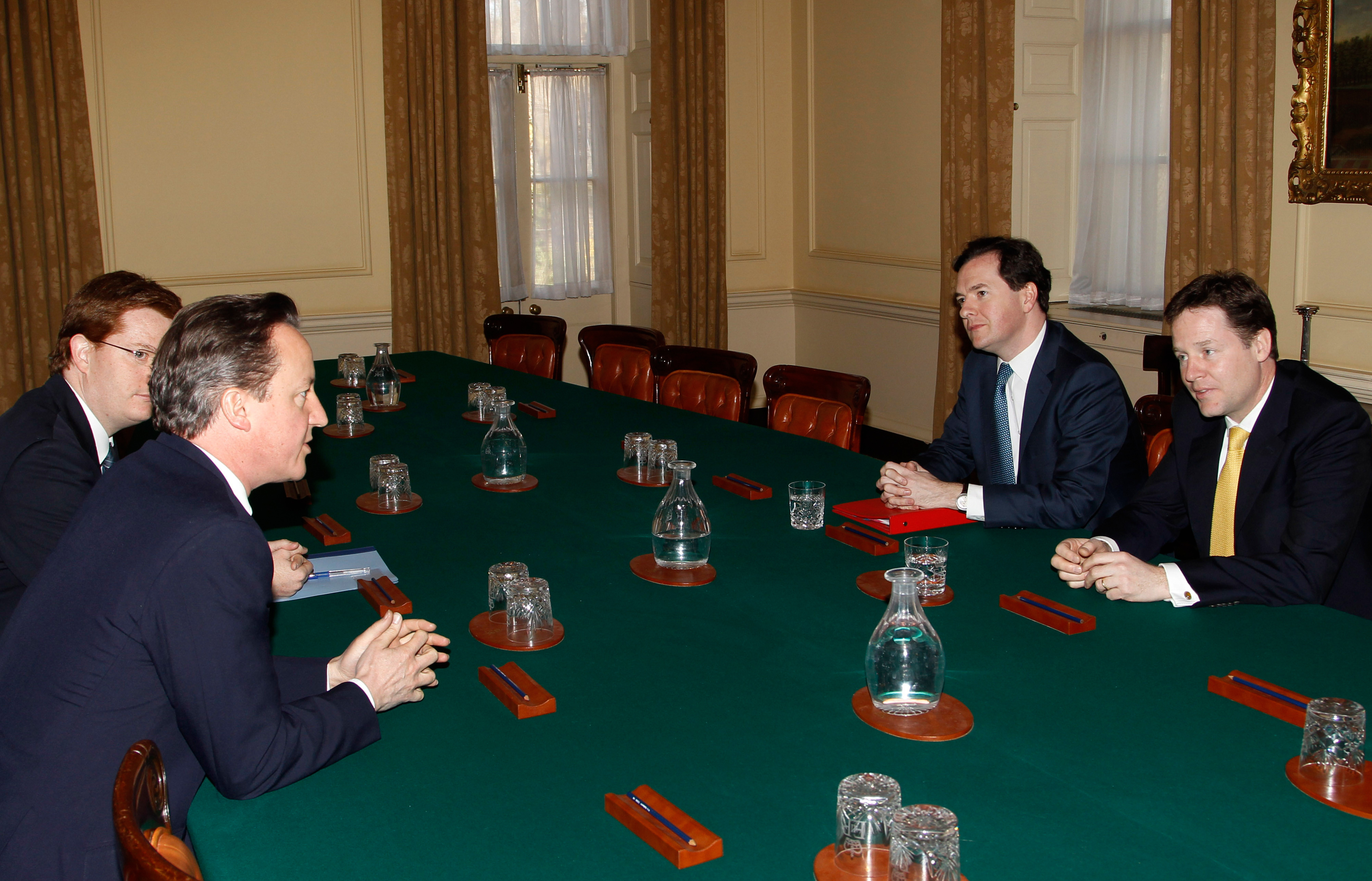Four days after George Osborne signed its death warrant, there is still life in the 50p rate yet. The two main political interviews in today’s papers — Ed Miliband in the Telegraph, Danny Alexander in the Times (£) — both focus heavily on the top rate’s impending demise. The Labour leader, of course, is continuing to ask whether David Cameron and George Osborne will themselves benefit from the move to 45p, without actually managing to commit his party to a policy. The Chief Secretary to the Treasury is left defending a 45p rate, and does so by borrowing a recent Lib Dem slogan for the coalition as a whole: ‘This is a Budget for the millions, not the millionaires.’
But it’s another part of the Alexander interview that could turn out to be far more politically significant. It relates the post-2015 landscape that I blogged about recently. If you remember, last November George Osborne extended the ‘fiscal horizon’
of his Budget to include the two financial years after the election, 2015-16 and 2016-17. This encoded two more years of cuts into the political timetable, so that the deficit could be whittled
down to naught. Today, Alexander confirms — as he’s suggested in the past — that the Lib Dems will go into the next election backing those cuts:
Why so politically significant? First, because — as Alexander himself seems to acknowledge — this could be another issue to separate the Lib Dems from Labour. But also because it could separate the Lib Dems from the Tories too. The two coalition parties may agree on the sum of the cuts, but they may not end up agreeing on how those cuts are apportioned. Alexander hints at this in typically diplomatic fashion:‘The slogan “We’re all in this together” now seems to apply more to the coalition than the country. The Lib Dems have apparently signed up to a shared project with the Conservatives that goes beyond the next election. Mr Alexander confirms that his party will honour the spending commitments made by the coalition, which extend two years into the next Parliament.’
The IFS outlined some of this balancing act on Thursday. If departmental spending cuts carry on at the same rate, they said, then there would need to be about £8 billion of extra welfare cuts to match Osborne’s projections. If there were no further departmental cuts, then welfare would need to be cut by an extra £20 billion. Where to draw the lines will surely feature heavily in the Quad’s meetings in two or three years time. And the differences between the Tories and the Lib Dems then could tell in their manifestos.‘As Chief Secretary, his main responsibility is spending rather than tax. In the Budget the Chancellor announced that the Government would need to make £10 billion more of savings in welfare by 2016 to stick to its deficit-reduction timetable. But Mr Alexander insists that this was only “an illustration” of the kind of cut that could take place. “We haven’t begun to make those decisions yet. I think it’s right to try and open up a debate about those issues because there are some pretty fundamental choices that have to be made about how we use our resources.”’







Comments